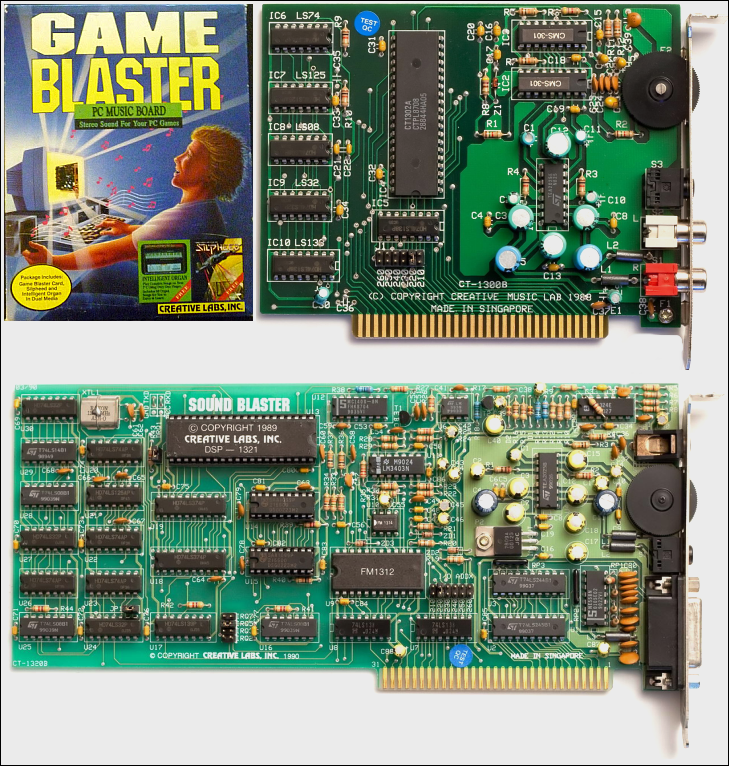CVGM.net - Chiptune, Demoscene and RetroGame Music

![[Computer » PC (Game Blaster / Creative Music System)]](/static/media/platform/symbol/platform_computer_pcgameblaster.gif) Platform - Computer » PC (Game Blaster / Creative Music System)
Platform - Computer » PC (Game Blaster / Creative Music System)

text from wiki:
"The history of Creative sound cards started with the release of the Creative Music System ("C/MS") board in August 1987. It contained two Philips SAA 1099 circuits, which, together, provided 12 voices of square-wave bee-in-a-box stereo sound plus some noise channels.
These circuits were featured earlier in various popular electronics magazines around the world. For many years Creative tended to use off-the-shelf components and manufacturers' reference designs for their early products. The various integrated circuits had white or black paper sheets fully covering their top thus hiding their identity. On the C/MS board in particular, the Philips chips had white pieces of paper with a fantasy CMS-301 inscription on them: real Creative parts usually had consistent CT number references.
A year later, in 1988, Creative marketed the C/MS via Radio Shack under the name Game Blaster. This card was identical in every way to the precursor C/MS hardware."
Game Blaster SAA1099 soundchips was present also on Sound Blaster cards.
SoundBlaster PRO was the first SB with no Game Blaster compatability

















 Songs
Songs

